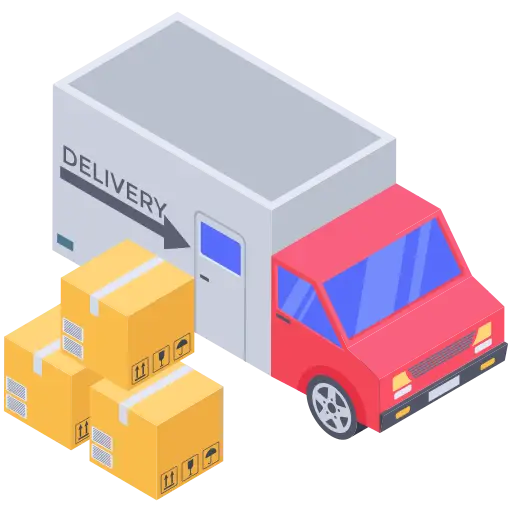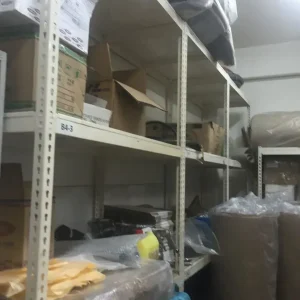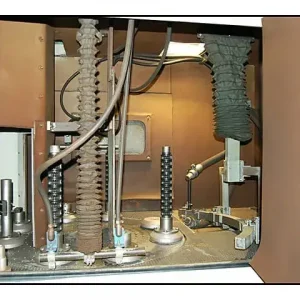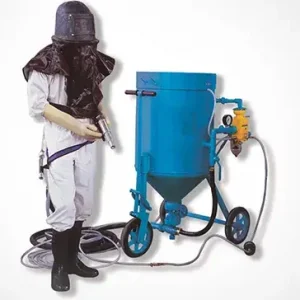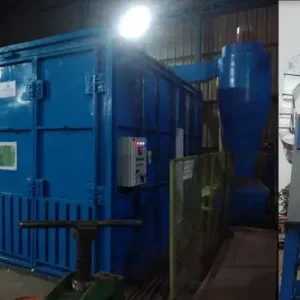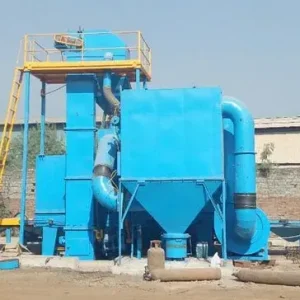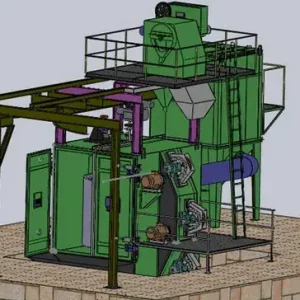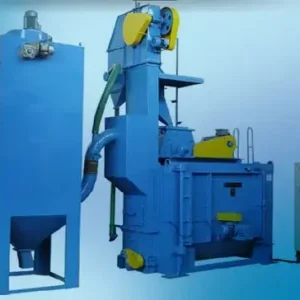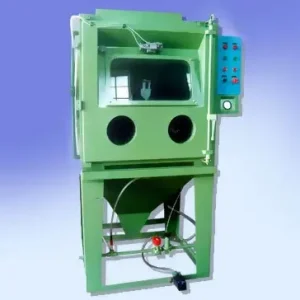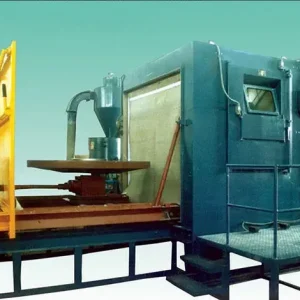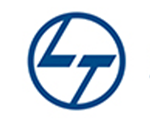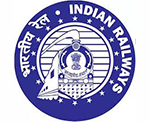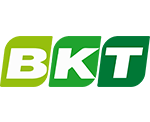If you’re planning to install a blast room for your industrial surface preparation needs, you likely have many questions — from design and setup to operation and maintenance. At Aerowheel Surface Finishing, we’ve helped dozens of industries across India design and implement efficient blasting systems, and we’ve compiled this detailed FAQ guide to help you understand everything you need to know.
1. What is a Blast Room?
A blast room is a fully enclosed, controlled environment where abrasive blasting (sand blasting or grit blasting) is performed safely and efficiently.
It’s designed to recover, clean, and reuse abrasives, keeping the workspace dust-free and ensuring consistent surface quality.
Industries like automotive, railways, defense, heavy machinery, and fabrication use blast rooms for surface cleaning, rust removal, and coating preparation.
2. What Are the Main Components of a Blast Room?
A standard blast room system consists of:
- Blasting chamber or enclosure
- Abrasive recovery and recycling system
- Dust collector and ventilation unit
- Blast machine and control system
- Lighting, soundproofing, and operator safety gear
Each component plays a vital role in ensuring performance, efficiency, and operator safety.
3. How Do I Choose the Right Size of Blast Room?
The size of your blast room depends on:
- The size of the components you’ll be blasting
- The production volume or number of parts per day
- The type of abrasive and desired surface finish
At Aerowheel Surface Finishing, we offer custom-designed blast rooms to match your exact requirements — whether for small components or large industrial structures.
4. What Types of Abrasives Can Be Used in Blast Rooms?
Common abrasives include:
- Steel grit and steel shot (recyclable and long-lasting)
- Garnet (eco-friendly and efficient)
- Aluminum oxide (for high-precision work)
- Glass beads or copper slag (for delicate or decorative finishes)
Your abrasive selection depends on the material type and the surface profile you want to achieve.
5. What Is the Difference Between Open Blasting and Blast Room Blasting?
- Open blasting is done outdoors, where abrasives and dust are released into the environment.
- Blast rooms, on the other hand, are enclosed systems that recover abrasives and maintain clean air using dust collectors.
Blast rooms are safer, more efficient, and environmentally friendly — ideal for consistent, high-volume production.
6. How Long Does It Take to Install a Blast Room?
Typically, installation takes 4 to 8 weeks, depending on:
- Room size and complexity
- Custom design requirements
- Site conditions and infrastructure readiness
After installation, commissioning and operator training usually take an additional few days.
7. What Are the Key Safety Requirements for Blast Rooms?
Safety is a top priority. Operators must use:
- Blast helmets with fresh air supply
- Protective suits, gloves, and boots
- Ear and eye protection
Additionally, the blast room must have proper ventilation, dust extraction, and emergency shut-off controls.
8. How Often Should Maintenance Be Done?
Preventive maintenance should be performed monthly or quarterly, including:
A Comprehensive Guide to Tumblast Shot Blasting Machines
Role of Automation in Modern Shot Blasting Machines
Tips for choosing Abrasive Blasting Media
- Checking filters, seals, and hoses
- Cleaning dust collectors and reclaim systems
- Inspecting nozzles and blast pots
- Lubricating moving parts and checking air pressure
At Aerowheel Surface Finishing, we offer maintenance contracts to keep your system performing efficiently year-round.
9. Can Blast Rooms Be Automated?
Yes. Modern blast rooms can be equipped with:
- Automatic abrasive recovery systems
- Programmable control panels
- Robotic blasting arms for repetitive jobs
Automation improves consistency, reduces labor costs, and boosts productivity.
10. What Is the Typical ROI (Return on Investment) for a Blast Room?
Depending on your usage, most companies recover their investment within 2–3 years due to:
- Reduced abrasive consumption
- Lower labor costs
- Higher throughput
- Minimal rework and improved coating life
We help our clients calculate detailed ROI estimates before installation.
11. Can a Blast Room Be Customized for My Industry?
Absolutely.
At Aerowheel Surface Finishing, we design blast rooms for multiple sectors:
- Automotive & heavy engineering
- Power plants & oil refineries
- Shipbuilding & railways
- Defense & fabrication workshops
Each setup is optimized for material type, production scale, and environmental standards.
12. What After-Sales Support Does Aerowheel Provide?
We offer complete post-installation support, including:
- Operator training
- Scheduled maintenance visits
- Spare parts supply
- Remote and on-site troubleshooting
Our goal is to ensure your blast room delivers consistent performance year after year.
Conclusion
Understanding the essentials of blast room design, installation, and use helps industries make informed decisions that maximize efficiency and ROI.
With years of expertise in surface finishing and blasting technology, Aerowheel Surface Finishing provides customized, high-performance blast rooms designed to meet your production goals and safety requirements.

